Daughters of Los Angeles: Social Services in the 19th-Century City

Los Angeles was a flea-bitten, murderous, mean little town in the early 1850s. Rancho beef went north to the gold fields; gold came south to be gambled on horse races and cards or spent on Chinese silk and Manila embroidery or paid out for fandangos that filled whole days with dancing.
In the saloons and brothels that fronted on the city’s unlighted dirt streets, aguardiente – “ardent water” (wine distilled into white lighting) – fueled so many deadly brawls among cattle drovers and vaqueros that Los Angeles was possibly the most violent city in America.
Los Angeles was barely a city even in mid-19th century terms.
In fact, it was barely a city even in mid-19th century terms. There were no hospitals and no services for the orphaned or abandoned.[i] Genuine piety was on daily display, but charity was a family matter. In a town filling with Anglo strangers after sleepy colonial decades, to be helpless and alone was a curse. When periodic epidemics of smallpox and cholera swept through the town in the early 1850s, the sick were quarantined in a wretched “pest house” or were nursed by boarding house proprietors paid so much a head by the county.
Years later, Harris Newmark recalled how the first efforts to bring social services to Los Angeles arrived in the form of blue-gowned nuns in outsized wimples:[ii]
About the beginning of 1856, Sisters of Charity made their first appearance … following a meeting called by the Spanish-born (Bishop) Thaddeus Amat during the preceding month to provide for their coming, when Abel Stearns presided and John G. Downey acted as secretary. Benjamin Hayes, Thomas Foster, Ezra Drown, Louis Vignes, Ygnacio del Valle and Antonio Coronel co-operated, while Manuel Requena collected the necessary funds. On January 5th, Sisters Maria Scholastica, Maria Corzina, Ana, Clara, Francisca and Angela arrived … It was to them that B. D. Wilson sold his Los Angeles home, including ten acres of fine orchard, at the corner of Alameda and Macy streets, for eight thousand dollars, and there for many years they conducted their school, the Institute and Orphan Asylum … Sister Scholastica, who celebrated in 1889 her fiftieth anniversary as a sister, was long the Mother Superior.
Newmark misremembered the names of the six Daughters of Charity who arrived in Los Angeles in January 1856. They were Sister Mary Scholastica Logsdon and Sister Ann Gillen, both from the Emmetsburg, Maryland motherhouse of their religious order. Sister Corsina McKay joined them in San Francisco. Sisters Angelita Mombrado, Clara de Cisneros, and Francesca Fernandez had been recruited by Bishop Amat from Spain. Together, the women had traveled by side-wheel steamer from Maryland to the Isthmus of Panama, taken the newly completed rail line to the Pacific side, and sailed from there to San Francisco where other members of their order were already caring for the poor, the sick, and the orphaned.
The arrival of the six sisters from San Francisco wasn’t handled well. No one greeted them on the plaza when they stepped down from the stagecoach that had taken them on the famously jolting ride from Phineas Banning‘s Wilmington port. A startled priest from the plaza church hurried out from the rectory to meet them. They stayed some days at the home of Ignacio del Valle while Sister Scholastica negotiated a location for the orphanage that Bishop Amat desperately wanted.
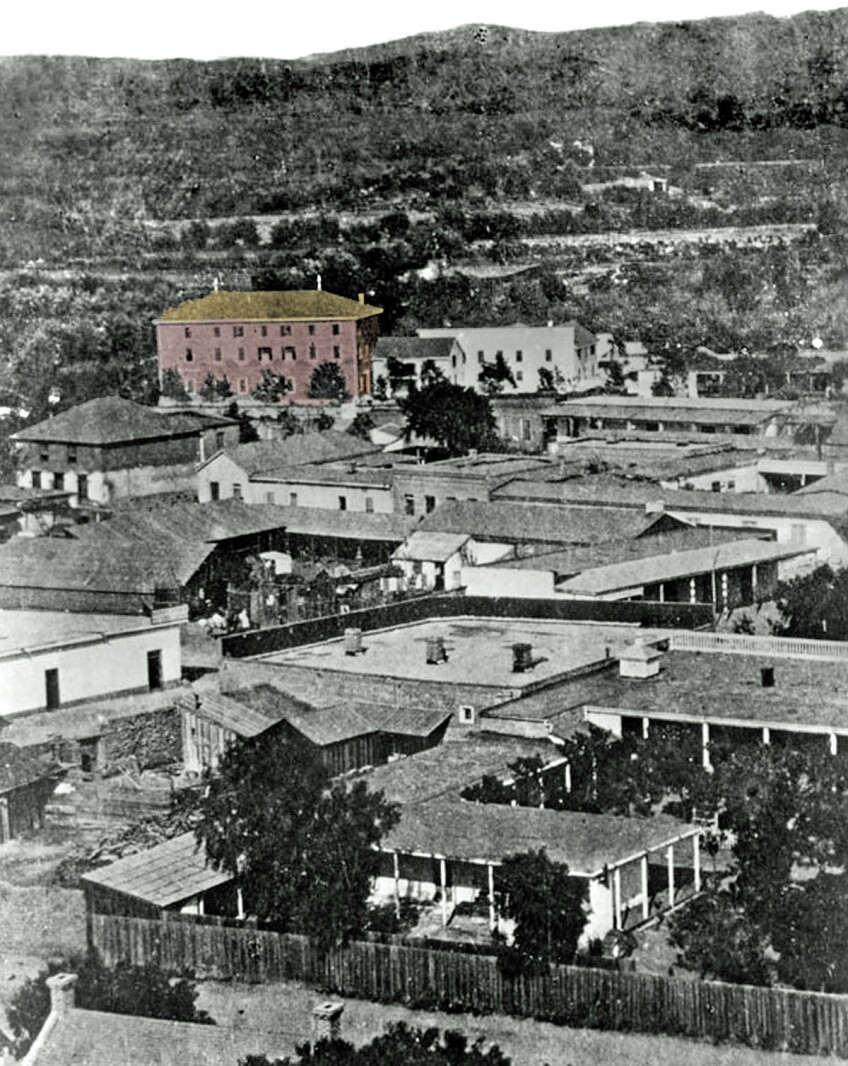
She chose a frame house northwest of the plaza belonging to Benjamin Wilson. (He had had the building fabricated on the East Coast, disassembled into numbered parts, and shipped around the Horn to Los Angeles.) Bishop Amat’s committeemen weren’t pleased with Sister Scholastica’s choice. They had intended to take care of friends who had old adobes near the plaza to sell.[iii] They did not reckon that Sister Scholastica, a member of her order since 1839, had already established an orphanage in Natchez, Mississippi and had been the property manager for all the Daughters of Charity institutions in the United States.
Sister Scholastica had a “winning personality,” as more than one biographer has noted, but she had been chosen to come to Los Angeles because she was an exceptional administrator. She would serve as the “Sister Servant” (superior) of her company of nuns until she retired in 1884.
The committeemen grumbled but they agreed to purchase Wilson’s nine-acre lot and adjoining house. Wilson reduced the $9,000 price by a $1,000 and contributed a further $250 to the help the sisters settle in. They soon needed more. The committee had raised only half the orphanage purchase price from a community appeal. Even with Bishop Amat’s contributions, the sisters needed an additional $1,000 by the end of 1858, as well as operating income for the orphanage (in bi-lingual Los Angeles, it was called the Institución Caritativa).
With practical dispatch, Sister Scholastica expanded the orphanage into a school for girls, whose tuition supplemented the costs of caring for the 22 orphans resident in 1858. The first students were the sisters themselves, since the three Americans spoke virtually no Spanish and the three Spanish sisters spoke no English. Learning both languages was necessary to serve the poor and abandoned in mid-19th century Los Angeles.
The school opened with 20 girls and Francisco Coronel (father of Antonio Coronel) and his two daughters as teachers. By the end of 1857, the school had 170 students. As enrollment grew, the sisters added “finishing school” courses – including music, drawing, and French – specifically for girls who came from the Californio gentry.
As historian Kristine Ashton Gunnell[iv] has noted, “The Californio-Mexican elite saw the advantages of teaching their children English – particularly in a safe Catholic environment – and sent their daughters to the school. Students included Susana Avila, Ysabel Ramirez, and Jose Septilveda’s daughters Ascension and Tranquilina. Some adult women, most notably Arcadia Bandini de Stearns, also received English lessons at the school.”
American Catholic institutions might form a cultural bridge between Californios, uncertain of their place in the newly Anglo city, and the diverse assembly of those who now called themselves Angeleños.
The sisters’ orphanage accepted girls without regard to ethnicity, ability to pay, or religion.[v] In her report to the California legislature in 1860, Sister Scholastica reminded the legislators that “no orphan has ever applied for admittance … without having been received, and her wants provided for” (despite, she might have added, the sisters continual worry about finances). Persuaded, the state Assembly voted an appropriation of $1,000.
The sisters’ Los Angeles supporters mirrored the sisters’ inclusiveness. It’s not hard to imagine why American Protestants, European Jews,[vi] and Californio, Irish, French, and German Catholics contributed to the maintenance of institutions administered by nuns whose starched wimple (called a cornette), blue-grey habit, and communal life put them outside the familiar categories of a woman’s place in a borderlands community. The risks of a frontier society required a community to moderate them, which (as Josiah Royce believed) might rise from a shared sense of civic responsibility that transcended religious and cultural antagonisms. It was hoped, said the Los Angeles Star, that support for the sisters’ school and orphanage would “soften and elevate the tone of all our social relations.”
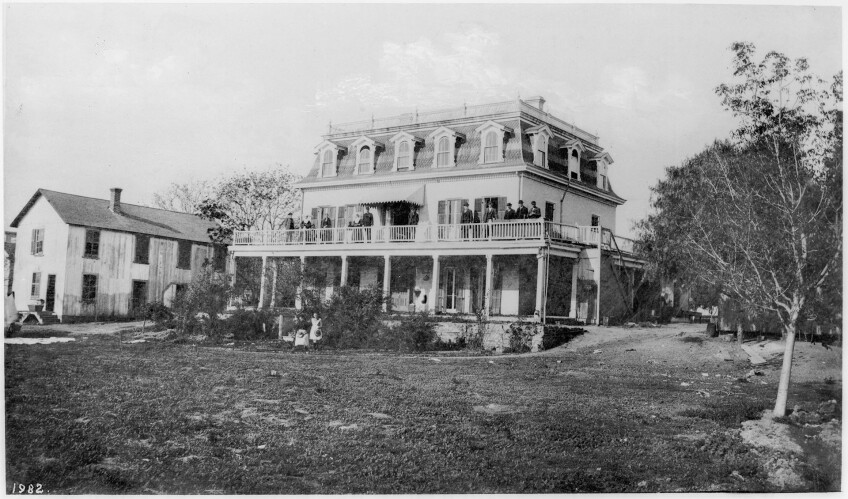
The early success of the Daughters of Charity in bringing basic social services to raw, undomesticated Los Angeles reflected the mission of their order, whose roots go back to 17th century France. The poor were to be treated with “compassion, gentleness, cordiality, respect, and devotion” without class or race bias.
Sister Scholastica expanded this mission almost as soon as she established the orphanage and school. She offered her sisters in 1858 as staff for a proposed county hospital[vii] for the indigent. The Los Angeles County Board of Supervisors had allocated $2,600 a year for the operation of a hospital and would provide a dollar a day for the care of each patient (later reduced by the supervisors to 75 cents).
Awarded the hospital contract, Sister Scholastica took over a four-room adobe north of the plaza and put Sister Ann Gillen[viii] in charge of the county’s meager hospital supplies: just cots and bedding for eight patients and two nuns. (Sister Ann remained in charge of the hospital until failing health forced her to resign in 1881.) Conditions were so poor, however, that the sisters quickly moved the sick to a house next to their orphanage and school.
During its first seven months, the sisters’ hospital[ix] took in 52 indigent patients and 11 private patients; 10 of them died. The county reimbursed the sisters $706. By 1870, the hospital was earning $6,000 a year against expenses of $5,500.
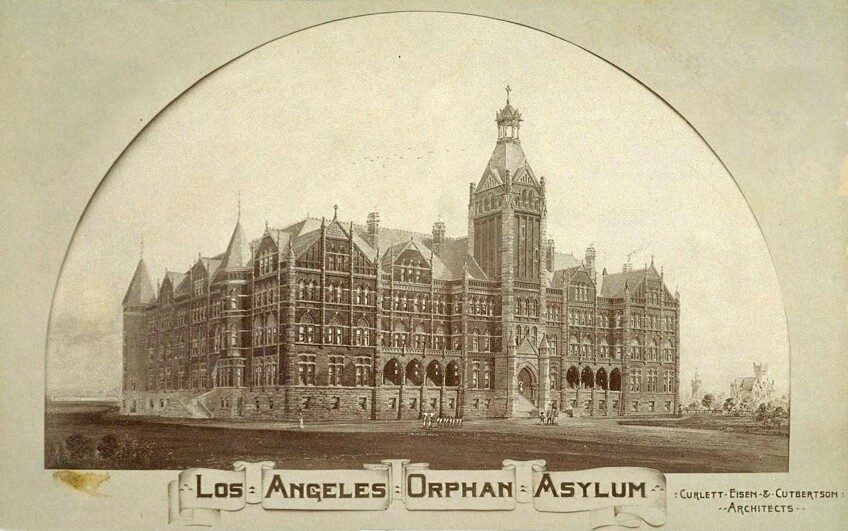
When smallpox swept through Los Angeles in 1861-1862, 1869, and 1876-1877, the city council turned to the sisters to care for those quarantined in the municipal “pest house.” Each time, Sister Scholastica sent two or three sisters to take charge. When flooding along the Santa Ana River in 1862 demolished the small communities of Agua Mansa and San Salvador, the sisters were given management of the relief efforts.
In 1869, the sisters’ hospital moved into a new, two-story brick building and incorporated as the Los Angeles Infirmary, making the Daughters of Charity the first women in Southern California to form and lead a corporation. The sisters also held other properties – which included a profitable vineyard with 6,000 vines and 300 fruit trees – much to the distress of Bishop Amat, who argued that the sisters’ properties ought to be under diocesan control.
Sister Scholastica resisted and eventually prevailed[x] and proved her administrative and political skills in other ways, taking out loans to expand the hospital and orphanage, successfully managing repayment schedules, dealing with elected officials to improve conditions in the hospital and pest house, and overseeing fundraising campaigns that included an annual Orphan Fair[xi] that was essential to the sisters’ precarious finances.[xii]
Fundraising in old Los Angeles had its quirks. “There were important considerations to decide the date of a Fair,” William H. Workman recalled in 1902. “It could not be held except on ‘Steamer day,’ as there was no ice (to make ice cream) save that which came from San Francisco, and it could not be held except at the right time of moon as no one cared to grope about the streets in … darkness.”
A gradually maturing Los Angeles required of the sisters ever larger responsibilities through the 1860s and 1870s. The orphanage and school needed more space, and the hospital was entirely inadequate to handle the patients who needed care.
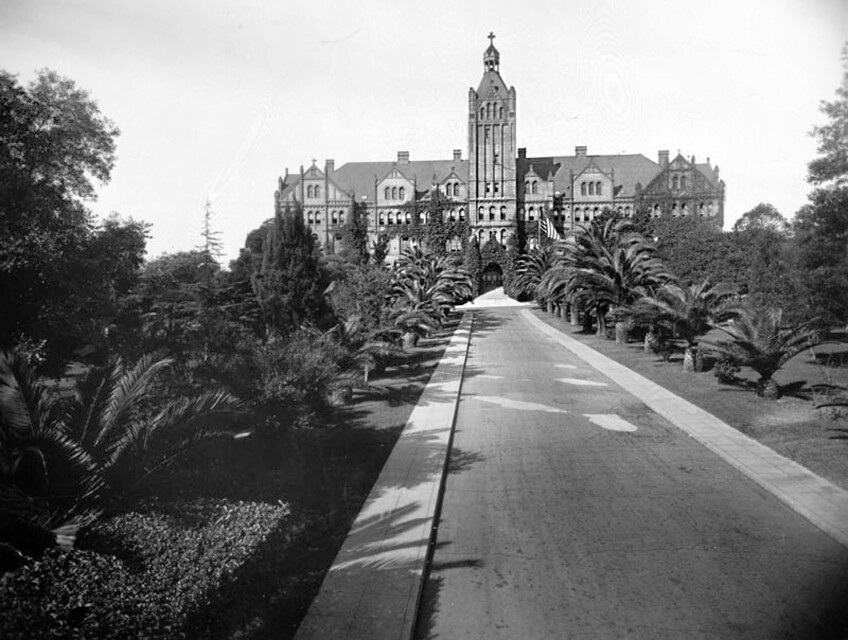

The hospital moved again to North Main Street and San Fernando Road and then to 6.5 acres at Sunset Boulevard and Beaudry Avenue in 1887. In late 1927, a new, 250-bed, eight-story brick hospital building – and the hospital’s fifth site[xiii] – opened at 3rd and Alvarado streets.
The orphanage moved too. Shortly before she retired in 1884, Sister Scholastica secured property in Boyle Heights for a much larger facility. After years of fundraising, the cornerstone for the new building, designed[xiv] by Curlett, Eisen and Cuthbertson, was finally laid in February 1890. On Thanksgiving Day 1891, the imposing (and somewhat ominous-looking) structure was dedicated by Bishop Francisco Mora. Its dormitories housed 250 girls, ranging in age from infants to young women of 16, and 25 small boys.
The Los Angeles Orphan Asylum served the city (and loomed over it) until the early 1950s, when time, the 1933 Long Beach Earthquake, and the widening of 6th Street undermined its foundations and made the building unusable. The sisters moved to Rosemead in 1953 and to a new facility they named Maryvale, today a residence for girls ages 12-18 and a center for family services.
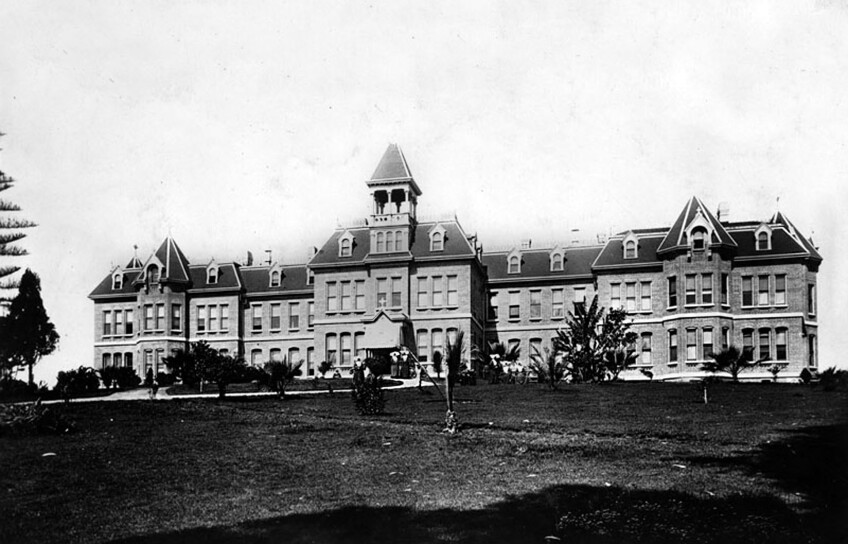
Not long after Sister Scholastica’s death in September 1902, William H. Workman offered his tribute to the Daughters of Charity who had first brought basic social services to Los Angeles. Workman remembered that:
The people of Los Angeles welcomed the Sisters, and, regardless of religious differences, gave them cordial assistance. Gentle Sister Scholastica and genial Sister Ann were everybody’s friends and to this day are not forgotten, even by those who have not seen them for many years. To need their help was the only ticket of admission to their sympathy; color, race, or creed did not enter at all into the consideration.
The nuns under Sister Scholastica were essential providers of publically funded social services in Los Angeles before 1880 and effective advocates for better treatment of the poor. Adaptable and entrepreneurial, negotiating a dual Catholic and American identity, the nuns molded their congregation’s charitable mission to the realities of a frontier town, becoming nurses, teachers, social workers, fundraisers, political lobbyists, and family advocates (to the annoyance of the deeply conservative bishops of the Diocese of Monterey-Los Angeles).
Just as importantly, during their pioneering years in Los Angeles, the Daughters of Charity served as unthreatening intermediaries between antagonistic cultural and ethnics groups, providing a place where Californio rancheros, Jewish merchants, and Protestant politicians collaborated to meet the needs of poor orphans and sick Angeleños. In the civic space the Daughters of Charity created, a city was being made.
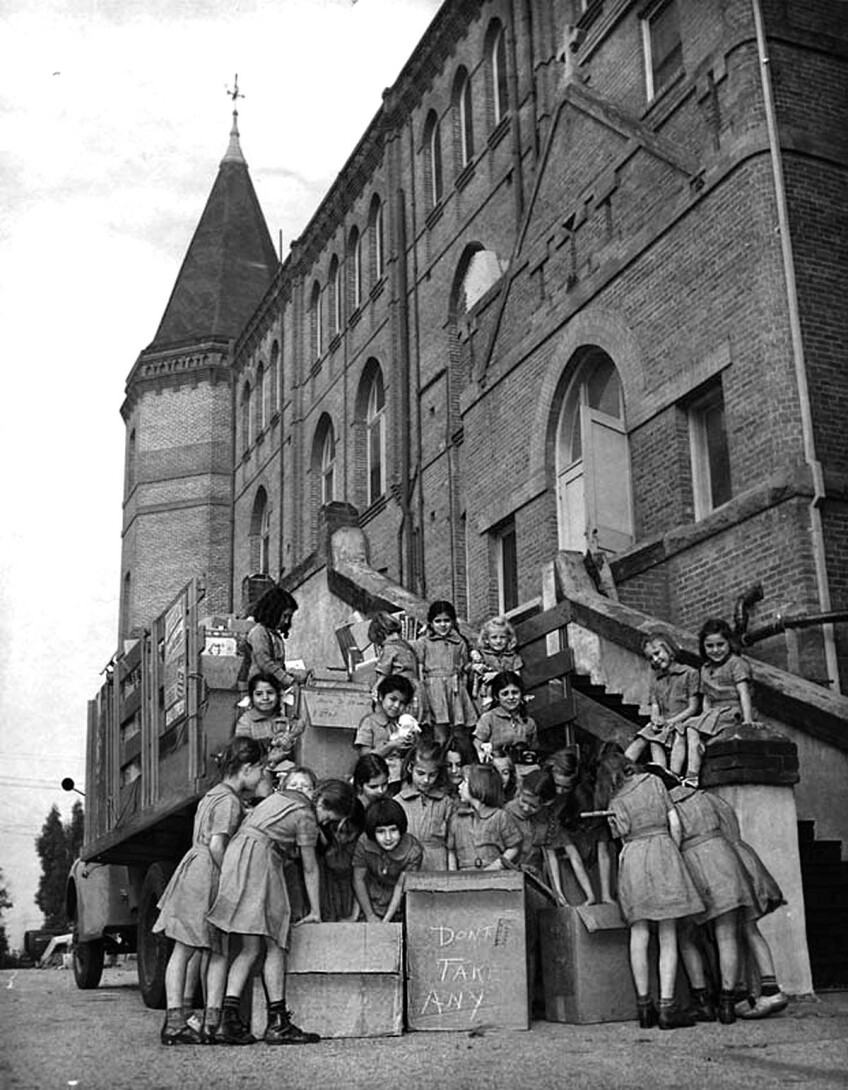
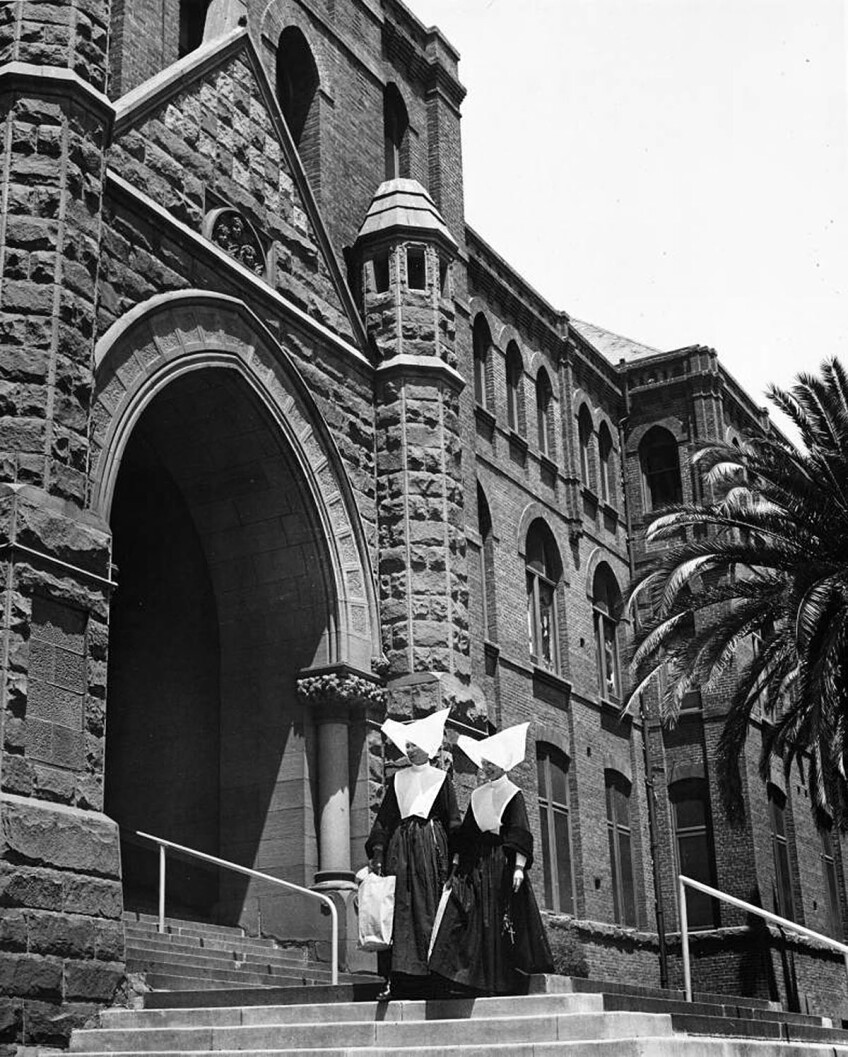
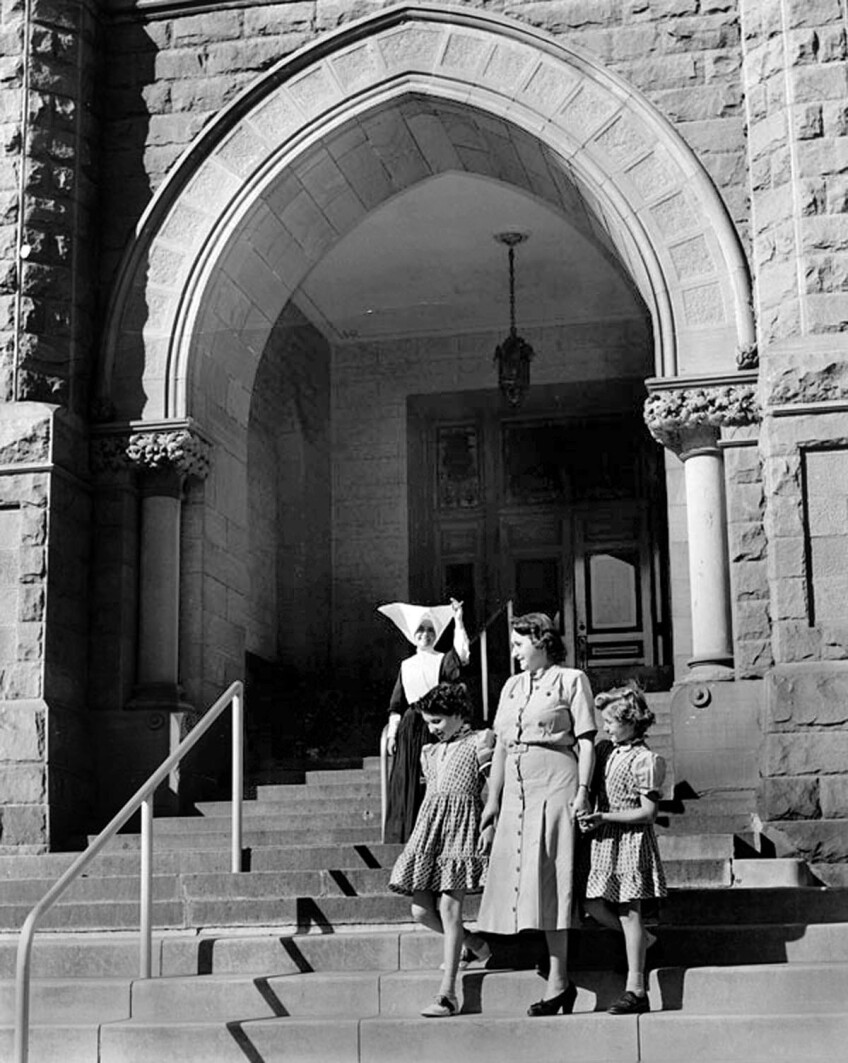
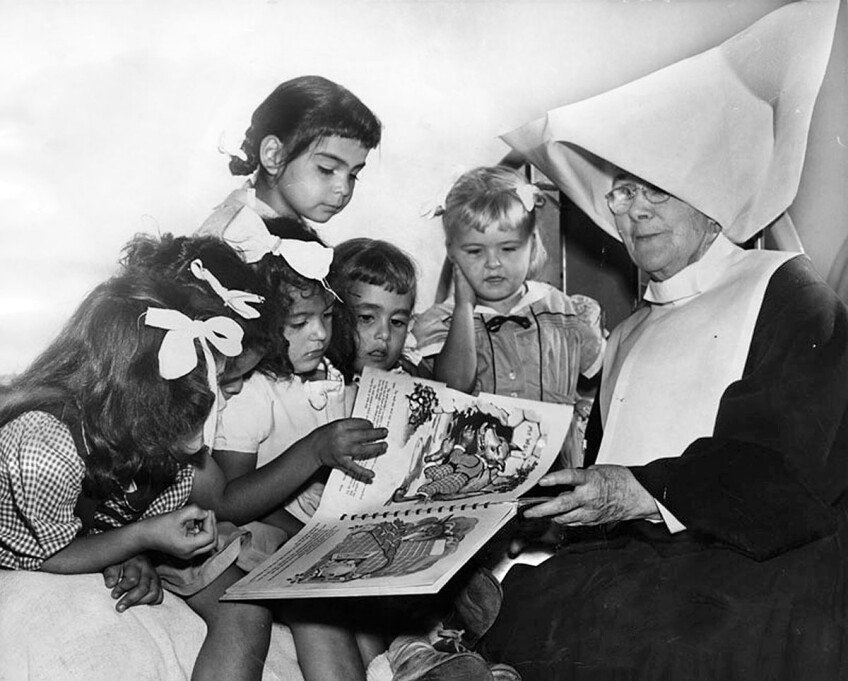
Notes
[i] During the colonial period in Los Angeles, children left homeless might be farmed out to willing families where they were often treated as unpaid labor.
[ii] The sisters were members of the Daughters of Charity of Saint Vincent De Paul, an order of American religious women that had merged with the much larger French branch of the order in 1850. Los Angeles, unused to the details of Catholic nomenclature, called them the Sisters of Charity (which is a different order).
[iii] Michael Engh, S. J., “Soldiers of Christ, Angels of Mercy: The Daughters of Charity in Los Angeles, 1856-1888,” Vincentian Heritage Journal: Vol. 15, Iss. 1, p. 30.
[iv] Kristine Ashton Gunnell, “Women’s Work: The Daughters of Charity Orphans’ Fairs and the Formation of the Los Angeles Community, 1858-1880,” Southern California Quarterly, Vol. 93, No. 4, p. 398. Gunnell also found that orphanage records did not include racial categories, perhaps because the sisters did not care.
[v] Gunnell, p. 397. “The 1860 census demonstrates that the Daughters of Charity accepted children from a variety of ethnic and national backgrounds … Thirty-three of the children were born in California, five in Mexico, two from other places in the United States, two from Australia, and one each from France, Ireland, and Argentina.”
[vi] Abraham Wolf Edelman, the city’s first rabbi, left a bequest for the orphanage when he died 1907. Isaias W. Hellman, Sister Scholastica’s banker, made a bequest of $5,000 to the orphanage in 1921. Caroline Hellman, Rosa Newmark, and Fanny Sichel served at the Orphan Fairs. Fanny Sichel was the wife of Philip Sichel, a prominent merchant. He was one of just eight self-identified Jews listed in the Los Angeles 1850 census. Caroline Hellman was the wife of Isaias M. Hellman, and Rosa Newmark was the wife of Joseph Newmark, who had arrived in Los Angeles in 1854.
[vii] State legislation in 1855 gave counties responsibility for the care of the sick poor.
[viii] Ann Street in Los Angeles was named in her honor.
[ix] The orphanage became the Los Angeles Orphan Asylum when it incorporated in 1869.
[x] Bishop Amat kept the deeds for the hospital and Los Angeles Orphan Asylum until Bishop Mora, Amat’s successor, agreed to transfer them to the Daughters of Charity in 1884. Significantly, that was the year that Sister Scholastica retired.
[xi] The first fair was held in 1858. They continued to be a source of the sisters’ income until the 1890s. Receipts ranged from $1,534 in 1863 to $2,316 in 1876 (Gunnell, p. 405). Although some modest state funding was made available to the orphanage, county funding of medical care at the Los Angeles Infirmary ended in 1878.
[xii] In 1861, the sisters’ properties were put on the Delinquent Tax List for non-payment of county property taxes.
[xiii] The Daughters of Charity incorporated the hospital as the Los Angeles Infirmary in 1869, but it was also called the Sisters’ Hospital. The name was changed to St. Vincent’s Hospital in 1918.
[xiv] The firm also designed the Los Angeles City Hall in a similar style.